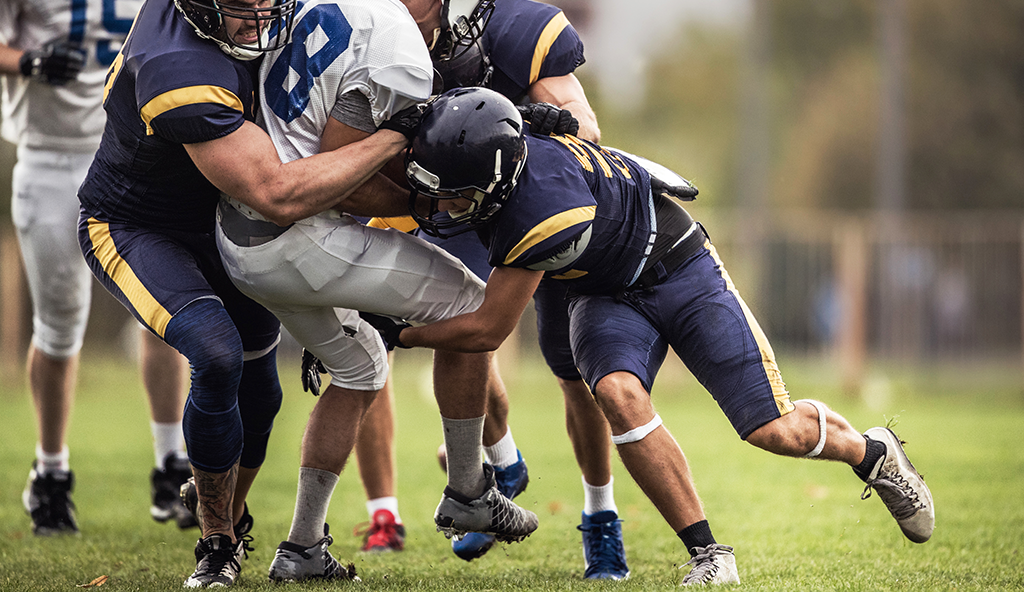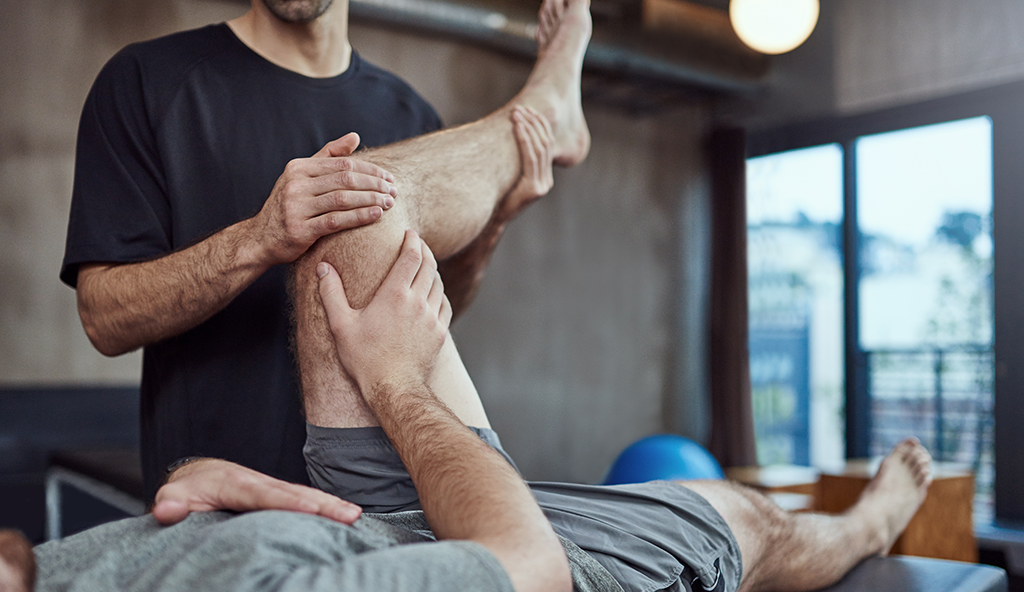
Injury Overview
Femoroacetabular impingement (FAI) is a hip condition where the bones of the hip joint rub together in an abnormal way. This involves the femur, bone in the the thigh, and acetabulum, the cup of the hip. FAI most often occurs when the shape of a patient’s bones are slightly abnormal. This abnormality is often either a bump on the front of the femur, often called a CAM, or an area of excess bone involving the acetabulum, often called a PINCER. FAI typically occurs when patients with moderately or severely abnormal anatomy are performing normal activity or when patients with mildly abnormal anatomy are performing activities involving extreme ranges of motion. FAI may occur in active adults, recreational athletes, or high-level athletes and sometimes causes difficulty in individuals who use a repetitive, consistent motion of the hips. The interaction of the femur and acetabulum in FAI creates friction resulting in a pinching mechanism as well as a levering mechanism in some instances. These forces can slowly damage the cartilage or other structures of the hip joint over time and lead to hip pain.
Symptoms
When patients have Cam and/or Pincer abnormalities typically the actual impingement occurs with certain hip positions: most frequently hip flexion, adduction, and internal rotation. For this reason, patients with FAI do not always present with immediate symptoms. Often patients have added an activity or changed their activity to one where impingement occurs and subsequently have a gradual increase in pain. Certain positions will often produce a sharp pain. As more damage occurs, patients will often develop a deep ache in the groin. Decreased mobility at the hip can be an associated symptom. Patients will have difficulty squatting/sitting for long periods of time or standing after they are in a squatting/sitting position.
Diagnosis
Dr. Anz will perform a thorough physical exam and will ask a series of questions relating to the type and level of pain, as well as assess the exact movements that increase pain levels. Through a complete physical examination, he will be able to better determine where the pain is originating. Dr. Anz may order a series of X-rays to evaluate for the presence of the bony abnormalities. Certain X-rays are important to evaluate for a Cam and/or Pincer lesion. In some cases, an MRI will be requested in order to evaluate soft tissue structure of the hip, as they can be damaged in the presence of FAI.
Treatment
Most cases of FAI can be successfully managed with conservative treatment. If a non-operative treatment regimen has not been tried, Dr. Anz will first recommend this approach. This treatment course usually includes: activity modification (to avoid positions of impingement), avoidance of painful activities, non-steroid anti-inflammatory medication, and physical therapy to help strength the hip and core muscles therefore reducing the stress placed at the hip joint. Sometimes Dr. Anz may recommend a hip injection into the joint at times to help with diagnosis and at times for treatment purposes. If pain can not be managed with non-operative treatment Dr. Anz will discuss surgical options that exist for this condition.
Surgical Treatments
Dr. Anz utilizes an arthroscopic approach for FAI. During hip arthroscopy, Dr. Anz will make two small portal incisions. Using a small camera he will maintain direct visualization through one of the portals and will use the remaining portal to work with a series of tools. With these tools he will remove the excess bone at the femoral head and/or acetabulum to help reduce the friction at the hip joint.
Post-Operative
Dr. Anz strongly recommends a period of rehabilitation and/or physical therapy following hip arthroscopy. It is important that patients follow diligently their course of rehabilitation. Physical therapy following hip surgery is specifically designed to allow you the best chance at a speedy recovery and return to normal daily activities.
—
For more information regarding FAI related injuries please contact the Gulf Breeze, Florida orthopedic surgeon, Dr. Adam Anz located at the Andrews Institute.




